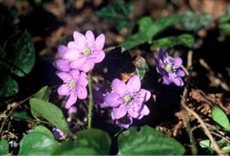The protected area
Situated in the municipality of Angera, this protected area was instituted by the Region of Lombardy with Regional Decree no. 34934 dated 19/07/1988. The area is part of the natural inlet in the Bay of Angera, and it includes the small island named Isolino Partegora.
The coastal district of the area behind the islet Isolino Partegora includes the promontories named "Motto della Forca" and "Punta della Conca", and it is one of the largest and most important areas of wetland on the Lombard shores of Lake Maggiore. As regards vegetation, the reed beds are of particular environmental value, along with the inner sections of the woodland, in which the dominant species is black alder, a tree typical of damp alluvial forests. As regards flora, there are some relicted species such as the marsh violet (Viola palustris). Also important are the beds of white lilies, which can be seen above all in the inlets. As regards fauna, the area is particularly important as an area in which aquatic birds nest and spend the winter, principally Podicipedidae (grebes), Anatidae (ducks, geese and swans) and Rallidae (coots and rails). For a number of years, a large cormorant colony has been living on Isolino Partegora.
The coastal district of the area behind the islet Isolino Partegora includes the promontories named "Motto della Forca" and "Punta della Conca", and it is one of the largest and most important areas of wetland on the Lombard shores of Lake Maggiore. As regards vegetation, the reed beds are of particular environmental value, along with the inner sections of the woodland, in which the dominant species is black alder, a tree typical of damp alluvial forests. As regards flora, there are some relicted species such as the marsh violet (Viola palustris). Also important are the beds of white lilies, which can be seen above all in the inlets. As regards fauna, the area is particularly important as an area in which aquatic birds nest and spend the winter, principally Podicipedidae (grebes), Anatidae (ducks, geese and swans) and Rallidae (coots and rails). For a number of years, a large cormorant colony has been living on Isolino Partegora.





